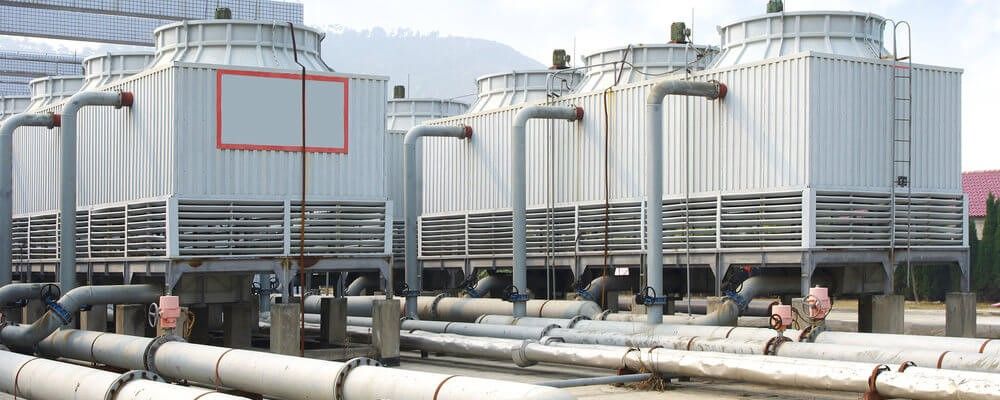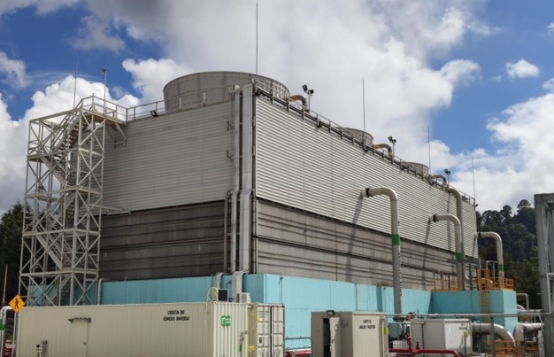When it comes to extreme weather in certain territories, district cooling is often the most efficient system in terms of energy consumption and sustainability. However, certain projects require savings in water consumption to also be taken into account when designing the right cooling system.
At Araner, we’ve recently faced the challenge of designing an efficient district cooling system that would eliminate water consumption while providing an efficient and reliable temperature management structure.
The World Bank quantifies the number of people living in a context of water scarcity at 2bn, and predicts the figure to reach the 4.6bn mark within the next 65 years. This forecast speaks directly of the growing need to consider savings in water when designing urban energy systems.
From this perspective, we summarize our key findings in water conservation in district energy systems, addressing how cities and developers can approach savings in water using an air cooled chiller.
What are current cooling possibilities and how they relate to water consumption in Saudi Arabia
District cooling refers to a type of energy system where a central cooling plant is in charge of distributing thermal energy to individual buildings through a network of pipes.
There are several options when it comes to cooling:
- Water-cooled chillers: based on cooling towers and other components (such as water pumps and chillers), they use humid air streams (ambient air stream and a water spray) to generate cooling.
This type of chiller has traditionally been considered as the most efficient solution for generating cooling.
However, a water cooled chiller system is problematic in terms of savings in water, as it relies on consuming water to function. Additionally, this equipment produced polluted water, being an added problem in terms of sustainability as water employed in these chilling towers (known as “blowdown”) is highly pollutant.
- Air-cooled chillers: while initially these systems may require higher electricity consumption, they allow for a zero water use , thus bringing additional benefits to the table. As such, instead of using a humid air stream by employing water, an air cooled chiller (also known as dry cooler) uses currents of ambient air.
They’re becoming the right choice for certain projects where water access restrictions are enforced. In fact, as we explain further below in this article, at ARANER we’ve worked to develop highly efficient air-cooled chillers that are very impressive in terms of footprint, efficiency, and noise and represent a new record regarding increased NPLV ratings.
- Hybrid chillers may operate as air coolers and water coolers during different periods and, as such, present the same advantages and disadvantages as those two systems.
Learn more: Air Cooled VS Water Cooled Chiller
As it can be inferred from the information exposed above, when savings in water are to be enforced, developers should consider opting for a dry cooler or air cooled chiller model.
Additionally, it’s also important to examine the water-to-energy nexus: while water-cooler chillers are traditionally considered as more sustainable (because they use less energy), they rely on water that must be pumped, filtered and treated, thus increasing these systems energy demand.
For other projects, located close to the sea or in areas environmentally protected, “zero water discharge policies” are imposed. The blowdown from cooling towers and the water reject from water treatment plants are very contaminated. Cooling towers might not be the best option for projects that zero water discharge is required.

In other words, from a global perspective, their energy consumption is much higher than what is commonly stated, as most power plants consume high quantities of water either directly or indirectly.
What this means is that the benefits of employing a cooling tower when compared with an air-cooled chiller may not compensate for the water consumption that is needed.
As such, at ARANER, we understand developers and designers should consider options on a case-by-case basis. We explore this issue further below in this article.
How an air-cooled chiller achieves savings in water and energy efficiency
As we’ve stated above, an air-cooled chiller doesn’t require water consumption to operate, as these systems are based on cooling towers with zero water consumption.
Furthermore, At ARANER’s we’ve been able to increase efficiency in air-cooled chillers to the point where our systems have achieved yearly average COPbelow 1 kW/TR.
In order to do so, we’ve employed our expertise and knowledge to apply the following three technologies, which improve our systems’ energy efficiency with the additional benefit of zero water consumption:
- Direct Condensation Chillers. These present a higher efficiency than traditional indirect condensation chillers, normally used in centrifugal chillers with cooling towers
- Long-term thermal energy storage tanks. These structures facilitate chillers to work mainly at night with low ambient temperatures for more than 70% of the hours per year, pushing these systems’ efficiency further
As such, developers and cities have been able to access the following additional benefits of installing district cooling systems based on a dry cooler or air cooled chiller model:
- No need for cooling towers
- Zero water consumption and waste
- The issue of water conservation is also key when it comes with dealing with emergencies and disasters, as water supplies will not turn into an issue
- Low maintenance costs
- Easier to operate and control, as tower freezing and tower bypass are not needed
- Chemical costs avoided, including the generation of polluted water

Air-cooled chillers: a case study
The information summarized above is a direct lesson learned by ARANER through the development of an efficient district cooling structure for one of our clients in Saudi Arabia.
This country's extreme weather conditions meant an efficient district energy system was to be installed. However, the country also posed an additional challenge: the need to guarantee water consumption in Saudi Arabia is zero.
In such a context, at ARANER we realized the advantages that developing an efficient dry cooler or air cooled chiller model could bring to the project. In fact, this project’s sustainability was enhanced by the possibility of obtaining energy from renewable sources (solar energy being an abundant source in this particular location).
Through the implementation of a state-of-the-art district energy system as described in the previous epigraph, we were able to generate an iconic project that has become a key reference in the Middle East context for sustainability, reliability and energy efficiency that is also LEED certified.
The lesson is quite transparent: both air-cooled and water-cooled systems present their own advantages and disadvantages. While current trends in the district energy industry point towards the use of water-cooled, the growing need for zero water consumption may see an expanded interest in air-cooled chillers which, at the same time, are providing a heightened efficiency thanks to technological innovations.
At ARANER, we suggest each project must be considered as an individual case. Additionally, we invite you to download our free ebook about the Abdali Boulevar case study in order to learn more about savings in water in district cooling and the technical specifications achieved in our end product.










